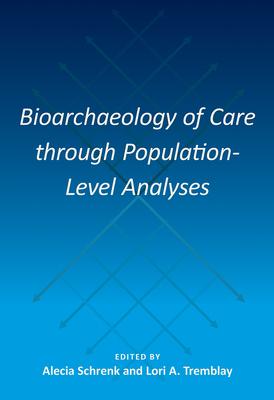
Book
Bioarchaeology of Care through Population-Level Analyses
(Write a Review)
Hardcover
$94.44
current and emerging methods and theory, this volume introduces new avenues for
exploring how prehistoric and historic communities provided health care for
their sick, injured, and disabled members. It adjusts and expands the
bioarchaeology of care framework--a way of analyzing caregiving in the past
designed for individual case studies of human skeletal remains--to detect and
examine care at the population level. Covering a
range of time from the Archaic period to the present, contributors discuss
community settings including British hospitals and nursing homes, a shell
burial mound site in Alabama, and the Mississippi State Asylum. These essays
offer insights into the care given to children and those with reduced mobility,
the social burden of health care, practices of euthanasia, and the relationship
between care for the mentally ill and structural violence. A
necessary extension to our understanding of the complexities of caregiving in
the past, Bioarchaeology of Care through
Population-Level Analyses shows that it is important to recognize the
impact of disease or disability on both the individuals affected and their
broader communities. Contributors demonstrate that flexibility in
bioarchaeological modeling and methodology can result in robust and nuanced
scholarship on caregiving in the past and the societies that provided that
care. A volume in the series Bioarchaeological Interpretations of the Human
Past: Local, Regional, and Global Perspectives, edited by Clark Spencer Larsen
Contributors: Petra Banks Anna-Marie C. Casserly Briana R. Moore Anna Osterholtz
Bennjamin J. Penny-Mason Charlotte A. Roberts Alecia Schrenk Diana S.
Simpson Lori A. Tremblay
current and emerging methods and theory, this volume introduces new avenues for
exploring how prehistoric and historic communities provided health care for
their sick, injured, and disabled members. It adjusts and expands the
bioarchaeology of care framework--a way of analyzing caregiving in the past
designed for individual case studies of human skeletal remains--to detect and
examine care at the population level. Covering a
range of time from the Archaic period to the present, contributors discuss
community settings including British hospitals and nursing homes, a shell
burial mound site in Alabama, and the Mississippi State Asylum. These essays
offer insights into the care given to children and those with reduced mobility,
the social burden of health care, practices of euthanasia, and the relationship
between care for the mentally ill and structural violence. A
necessary extension to our understanding of the complexities of caregiving in
the past, Bioarchaeology of Care through
Population-Level Analyses shows that it is important to recognize the
impact of disease or disability on both the individuals affected and their
broader communities. Contributors demonstrate that flexibility in
bioarchaeological modeling and methodology can result in robust and nuanced
scholarship on caregiving in the past and the societies that provided that
care. A volume in the series Bioarchaeological Interpretations of the Human
Past: Local, Regional, and Global Perspectives, edited by Clark Spencer Larsen
Contributors: Petra Banks Anna-Marie C. Casserly Briana R. Moore Anna Osterholtz
Bennjamin J. Penny-Mason Charlotte A. Roberts Alecia Schrenk Diana S.
Simpson Lori A. Tremblay
Hardcover
$94.44